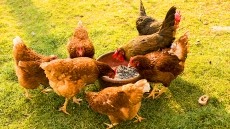EFSA clears Monsanto corn, again
designed by biotech giant Monsanto on the back of new evidence
submitted by German scientists.
In April this year a group of scientists at the European Food Safety Authority (EFSA) gave the green light to the genetically modified maize designed by US firm Monsanto to resist corn root worm, concluding after a series of risk assessments that food and food ingredients derived from Monsanto's MON 863 could safely enter the food chain.
Maize is used as a raw material for the manufacture of starch, the majority of which is converted by a complex refining process into sweeteners, syrups and fermentation products, including ethanol. Refined maize products are abundant in processed foods such as breakfast cereals, dairy goods, and chewing gum.
In September the European Commission received new research - a 13-week sub-chronic toxicity study with rats - from Germany, prompting the Brussels-based body to ask EFSA to carry out a further risk assessment on renal tissues and data derived from the study, and postponing a decision on whether the maize could hit the market.
The risk assessment strategy at EFSA for GMOs is based on the comparison of the GMO and derived products with their non-GM counterparts. The underlying assumption of this comparative assessment approach for GMOs is that traditionally cultivated crops have gained a history of safe use for the normal consumer or animals as food or feed products.
This comparison is the starting point of the safety assessment which then focuses on the environmental or food/feed safety and nutritional impact of any intended or unintended differences identified.
Mosanto's MON 863 corn currently has approval for use in food and feeds in the US, Canada, Japan, the Philippines, and Australia.
Non-GM maize, or corn, is grown commercially in over 100 countries, with a combined global harvest of about 590 million metric tonnes. Major producers of maize in 2000 were the US, China, Brazil, Mexico, France, and Argentina. Maize is grown primarily for its kernel, which is largely refined into products used in a wide range of food, medical, and industrial goods.
Facing the fury of anti-GM campaigners, in June the European Commission broke the de facto moratorium on GM foods and pushed through approval for a GM sweetcorn supplied by Swiss firm Syngenta to enter the food chain - the first approval of a GM foodstuff since 1998. Marking a second clearance, last week Brussels gave approval for Monsanto's herbicide resistant NK603 maize, and its derivatives, for use in a raft of food products.
David Byrne, the EU Commissioner responsible for health and consumer protection, claims a clear labelling system now in place for GM foodstuffs in Europe means that "consumers can now choose whether or not to buy any genetically modified products". Opening the door to allowing new GM products onto the marketplace.
But the unpopularity of biotech crops in the minds of the European consumer means the food industry has been slow to embrace the GM food sources on the grounds of simple business sense.
Food manufacturers keen to keep sales afloat will reject any use of genetically modified sources in their formulations, and consequently any need to GM label.
A recent survey polled by the UK's consumer magazine Which? found that consumers in the UK feel even more strongly about GM foods than they did two years ago and more than six out of 10 people (61 per cent) were concerned about the use of GM material in food production - up from 56 per cent in 2002.
Shoppers are not only concerned about GM ingredients in food; 68 per cent want manufacturers to go one step further and source non-GM animal feed, so meat and dairy products would have no links with the GM process.












